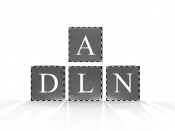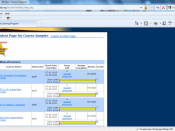Redefining Distance Learning For The Future:
Distance learning has an extensive history and has been utilized throughout many countries over the past 160 years, but only during the last decade has it started to really gain acceptance and popularity. Since its inception, distance learning has evolved from correspondence courses, to educational radio, one and two-way teleconferencing, educational television, video conferencing, and today, distance learning opportunities are most commonly found in a computer assisted/Web-based interactive environment (Saba, 1999; Simonson, 2000).
What we are currently witnessing worldwide is a paradigm shift in the overall educational process. This is evident when observing the rapid growth and expansion that distance educational programs have experienced in recent years. In today's global economy, successful organizations must build on lessons learned by educators and learners of the past to help prepare them for a future which is currently being re-defined.
I believe that distance learning of the future will be defined as the delivery of useful learning opportunities which are responsive to the learner's requirements and also made available at a time and place that is convenient for the learner.
The emphasis of this definition focuses on responsiveness of course content coupled with format and place of delivery resulting in a learner-focused and performance-centered approach. This approach will afford the life-long learner the ability to master the needed skills, knowledge, attitudes and abilities which will help him or her to succeed in life, whether at their job or in continued education.
The approach to distance learning in the past has focused primarily on course content and means of delivery. Distance learning of the future should link together five basic organizational elements. These elements include inputs, outputs, outcomes, products and processes and will serve as the basis for the redefining of distance learning programs of the future.
In order to redefine distance learning for the future it is critical that a tried and proven performance model is selected, and then rigorously applied. Performance and learning design are not solely based off intuition and content-orientation. . The development of any good performance system will be standardized and responsive. The conventional model of analysis, design, development, implementation and evaluation is useful but incomplete. This particular model fails to assess needs prior to analyzing needs which I believe is necessary in order for continuous improvement to be realized. Contemporary understandings of performance systems indicate that many of the steps in a performance system model should overlap, thus avoiding the long and often drawn-out "analysis paralysis" of some ill-conceived approaches (Kaufman, 2000; Kaufman & Watkins, 1996).
Many different levels of planning are needed in order to effectively redefine distance learning, and they should all be linked together. A simple Vision Statement is a good way to start. An example of one possible Vision Statement applicable to the future of distance learning would relate to the kind of world we want to create for our future generations. The purpose of the Vision Statement is to identify long-term expected future outcomes.
Once the Vision Statement has been formulated the next planning step is to develop a Mission Statement. The Mission Statement derives from the Vision Statement and represents that part of the Vision Statement which is committed to the delivery of products or services. There must be a linking among Products (e.g., course mastery), Outputs (e.g., certification, graduation, or completion), and Outcomes (e.g., self-sufficient, self-reliant individual), otherwise, distance learning is a "solution to no known problem." In order for distance learning to be a solution of the future it must define the value it adds to learners and society first and foremost.
When doing this, distance learning programs should pay special attention so as not to confuse the means of delivery with the mastery requirements for learning. What I mean by this is that typical approaches to education and distance learning start with the assumptions about the most effective and efficient mode and methods of delivery. I don't believe it to be a good idea to select the means prior to defining and justifying the ends. I recommend that when selecting the methods and means for distance learning that they are based off of who the learners are, where they are, what they must master, and how best to organize the learning opportunities. The future of distance learning will directly be attributed to how we prepare to use whatever resources can best meet the objectives at hand.
I also believe that it is essential to conduct a needs assessment in order for distance learning to continue improving. Useful needs should be defined as "gaps between current and desired results." A needs assessment identifies needs and processes then places them in priority order on the basis of the costs incurred to meet the specified needs as compared to the costs of ignoring them. A systematic, learner-focused performance-centered approach is also recommended.-
The distance learning experience should be designed specifically using research and knowledge of individual learners differences, motivations, and learning styles for the purpose of defining and achieving organizational objectives The learning materials and methods of delivery need to be responsive to the learner, to include their location or where they are, along with how they best learn given the tasks *to be completed.
There are many new realities for society, organizations, and individuals. in education today. Educational institutions are being required to provide responsive and responsible learning opportunities at a time and place convenient for the learner. To do this effectively in the future these institutions must not continue to select the means of distance learning before selecting and justifying the ends and consequences that they commit to deliver(Kaufman, 2001; Kaufman & Watkins, 2000.)
In conclusion, the future of distance learning is being redefined at this very moment. I have presented in this essay a few concepts, approaches, tools and techniques that I believe if implemented will lead our organizations and communities toward achieving useful results with regards to the future of distance learning.


